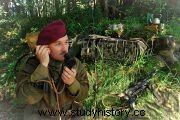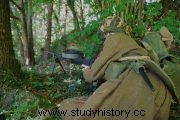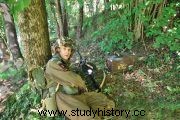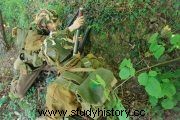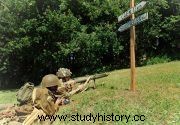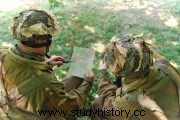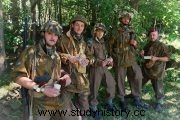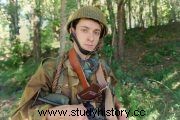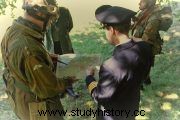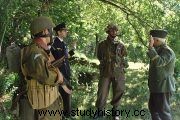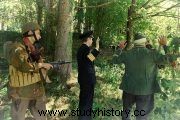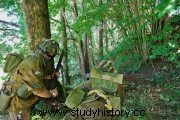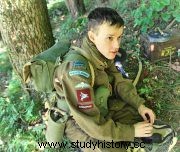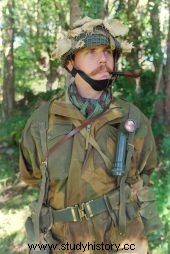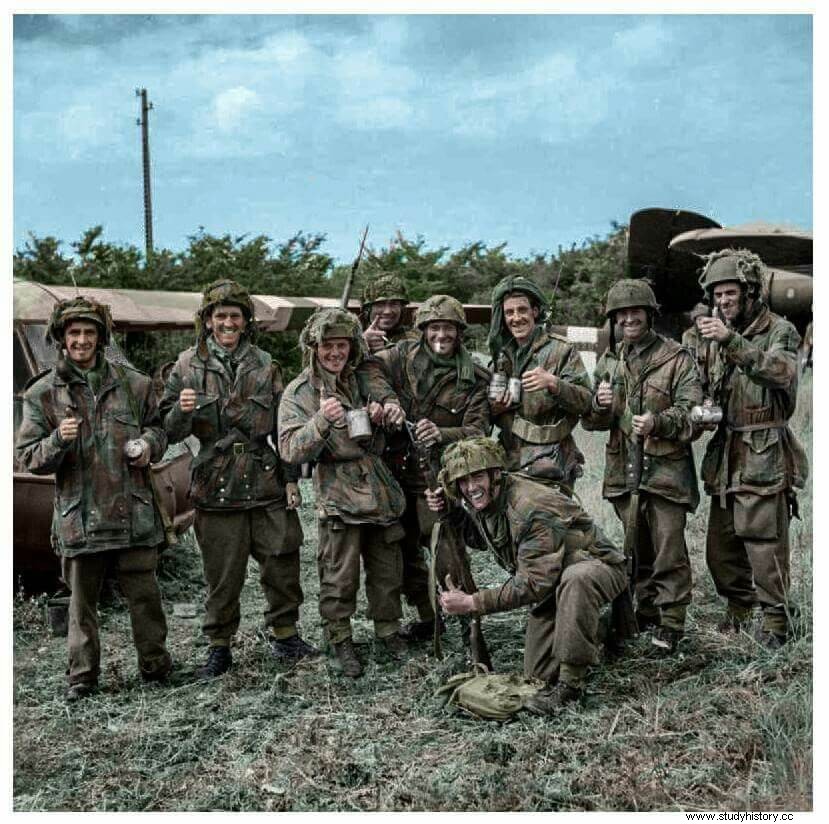
We have previously commented on this blog that the publication in 2018 from the book Basque combatants in the Second World War in the Desperta Ferro publishing house, he left unfinished some already planned sets, which were not done due to lack of time and/or means, like the one we present here. Today, when five years have passed since the birth of the Fighting Basques project , we have a certain perspective when dealing with a memory that begins in 1936 and ends in 1945, with the end of the Second World War, although we are evaluating the possibility of projecting it further, in the immense Asia-Pacific scenario, and more specifically in Indochina. In this country there was a war that did not end, far from it, with the capitulation of Japan, and in fact the Japanese army was not even disarmed there, which was used as a force of public order by the British in their confrontations with the Ho Chi Minh's Viet Minh, sponsored, during the war, by the OSS (the secret agency forerunner of the CIA).
And the fact is that this project of the Sancho de Beurko Association, which combines historical recreation and research, is at a time when we already have accumulated some experience resulting from working in the different memory niches (France, USSR, United Kingdom, USA, Philippines, etc.), being able to affirm that family history and microhistory they become the most appropriate instruments to deepen the knowledge of the participation of minorities in the war efforts of the countries mentioned above, and in any other that is proposed. The Fighting Basques It is a project halfway between military history and emigration and diaspora studies, which has the added value of historical recreation as a didactic tool and the best way to make visible a generation of which we hardly have images. This gives us a new perspective on how the different migrant niches evolve to adapt to a changing and convulsive world, sometimes starting from the same ideological substratum, as happened, for example, with the exiled Basque population that remained in France at the end of the Second World War, especially the youngest, who had crossed the border to avoid being recruited by the Francoist army and found themselves outside their family and geographical environment, being easy prey for the recruiters of the Foreign Legion, as happened in the battalion Guernica. On the other hand, representing this memory using the historical recreation of contemporary times is quite a challenge for us, since this activity, unlike its sisters from older periods, normally manifests itself as a poorly developed socialization resource that is not even has a methodology and whose projection is reduced to various public events that are held with some regularity in towns spread throughout the country, although COVID-19 has temporarily modified this state of affairs.
After a trilogy of articles on historical recreation and memory published on this same blog during the last quarantine caused by the viral pandemic crisis –in addition to others previously published–, We return now with another of the so-called Basque “children of war” who fought in the British airborne forces during World War II and about whom, as happened with José María Irala, nothing was known before the birth of our project. This is Lucio Sauquillo Echevarría, to whom, not to be outdone and doing justice to his merits, we have also dedicated a set design, which in this case takes place in Normandy during the month of June 1944, just two weeks after the Day D. His clue for us began with the discovery of a document in which his father, Luis Sauquillo Ereñaga, asked for explanations in the summer of 1945 from the Basque Government delegation in Paris in relation to his two young sons, Lucio and Gabriel, although he already knew the fate of the first, who died on the European battlefields, but not under what circumstances (1).
Lucio Sauquillo, from war boy to D-Day
Lucio Sauquillo was born in Aretxabaleta (Gipuzkoa) in 1923 and was evacuated along with Gabriel in the expedition of children of the war that left the port of Santurtzi for England on May 20, 1937, but was not claimed by his parents after the end of the War Civil, who had gone into exile in France, so both boys stayed there, although they were separated. The youngest, Gabriel, remained in the Midlands, forming part of an active group of 40 boys who met with some regularity to share their things, soon capturing the attention of the Basque representatives in London, who feared the proselytizing that this and other groups could exercise the Spanish republican authorities in the capital of the United Kingdom, with President Juan Negrín at the head. Instead, Lucio was sent to the north of the country, settling in Scarborough (Yorkshire). The Sauquillo family, well known in Aretxabaleta, was very committed to the left and had suffered severely from the drama of the war. His father had presided over the Republican center in the town of Alto Deba and his three older brothers fought on the Basque fronts in the ranks of the Dragones battalion of the Unified Socialist Youth (JSU), one of whom died in combat and another was shot.
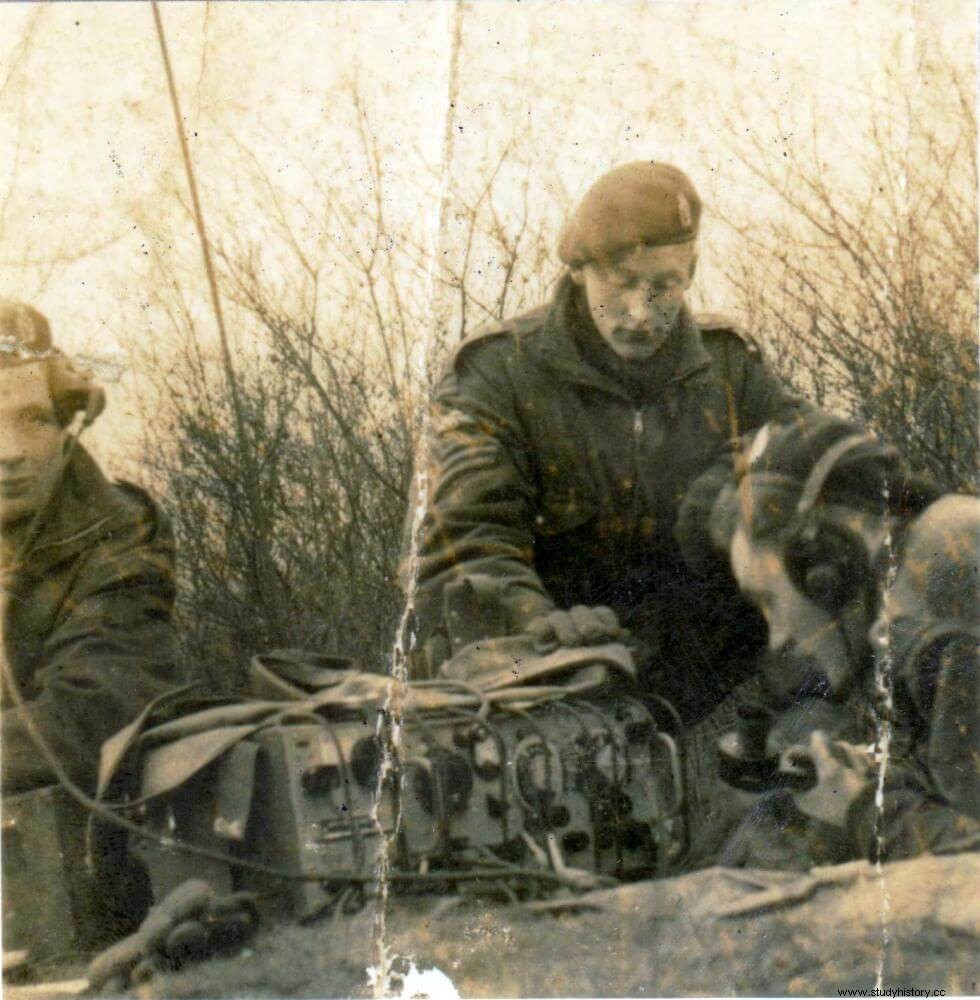
In Scarborough, the pretty seaside village that has shaped a traditional summer resort for generations of Englishmen, he still had time to learn the trade as an electrician and meet a girl named Annie Olive Agar before he joined the British Army, becoming the father of a boy at 18, although the couple never got married. According to his personnel file, he enlisted on November 19, 1942 and did basic instruction at the 19th Primary Training Corps in Edinburgh, from where, due to his training, he was transferred to the 100th Coy of the REME (Royal Electrical and Mechanical Engineers Corps), but the young Gipuzkoan was not willing to watch the war from the rear, joining the Army Air Corps to be trained as a paratrooper on September 14, 1943. His new unit would be the 12th Yorkshire, which had been organized during the month of May of that same year.
With the mind set that their objective would be the assault on German defenses in the Atlantic, the British “paras” toured the country in the middle of a tour of various locations, such as Ritchmond and Middlesbrough, and in a few months the dream day came when all those young people with their red berets shouting "Up the airborne!" They took the train that would take them to London's Waterloo station on their way to the embarkation areas where the troops called to participate in the largest combined military operation in history were gathering. The 12th Yorkshire joined the 5th Brigade of the 6th Airborne Division and proceeded on 27 May 1944 to Kevil Airfield. The goal of the entire division on D-Day would be to take the bridges over the Orne river and the Caen canal (the latter would be baptized as "Pegasus Bridge" in honor of the emblem of the British "paras").
In the early hours of June 6, 1944, long before the troops reached the landing beaches, British airborne forces were the first to reach the area , and Lucius jumped with them; Operation Tonga began. After managing to secure their objectives, the entire battalion massed at Ranville, repulsing a German counterattack at 11am. By then, they were already entrenched and subjected to constant artillery and mortar bombardment. At noon the gliders began to arrive with the bulk of the force, at which point they came under heavy anti-aircraft fire. From then on there were constant moments of uncertainty in which the "paras" feared the imminent arrival of German reinforcements in the area from nearby Caen, and always in close collaboration with Lord Lovat's commandos> , who had already reached the positions defended by the men of the 12th Yorkshire.
On the 7th they had to repulse a counterattack by the 21st Panzer, which displaced eight tanks, knocking out the only available anti-tank gun and inflicting heavy casualties, but the head beach was gradually consolidating. This confusing situation, where the men did not really know who is who, and weaved their communication networks in provisional command posts in the middle of the bocage, is what we have tried to reflect in the scenery that we propose in tribute to Sauquillo. They constantly reported to isolated British military German lines and were escorted by the soldier on duty for questioning by the commanding officer. Any time was a good time to stock up and morale, despite the constant stress of combat and lack of sleep, remained high. Many of those stories are common to all wars, giving rise to cases of looting and theft of the vanquished as souvenirs, which on this occasion we wanted to represent through the English soldier who wears on his wrists the watches that he takes from the Germans. .
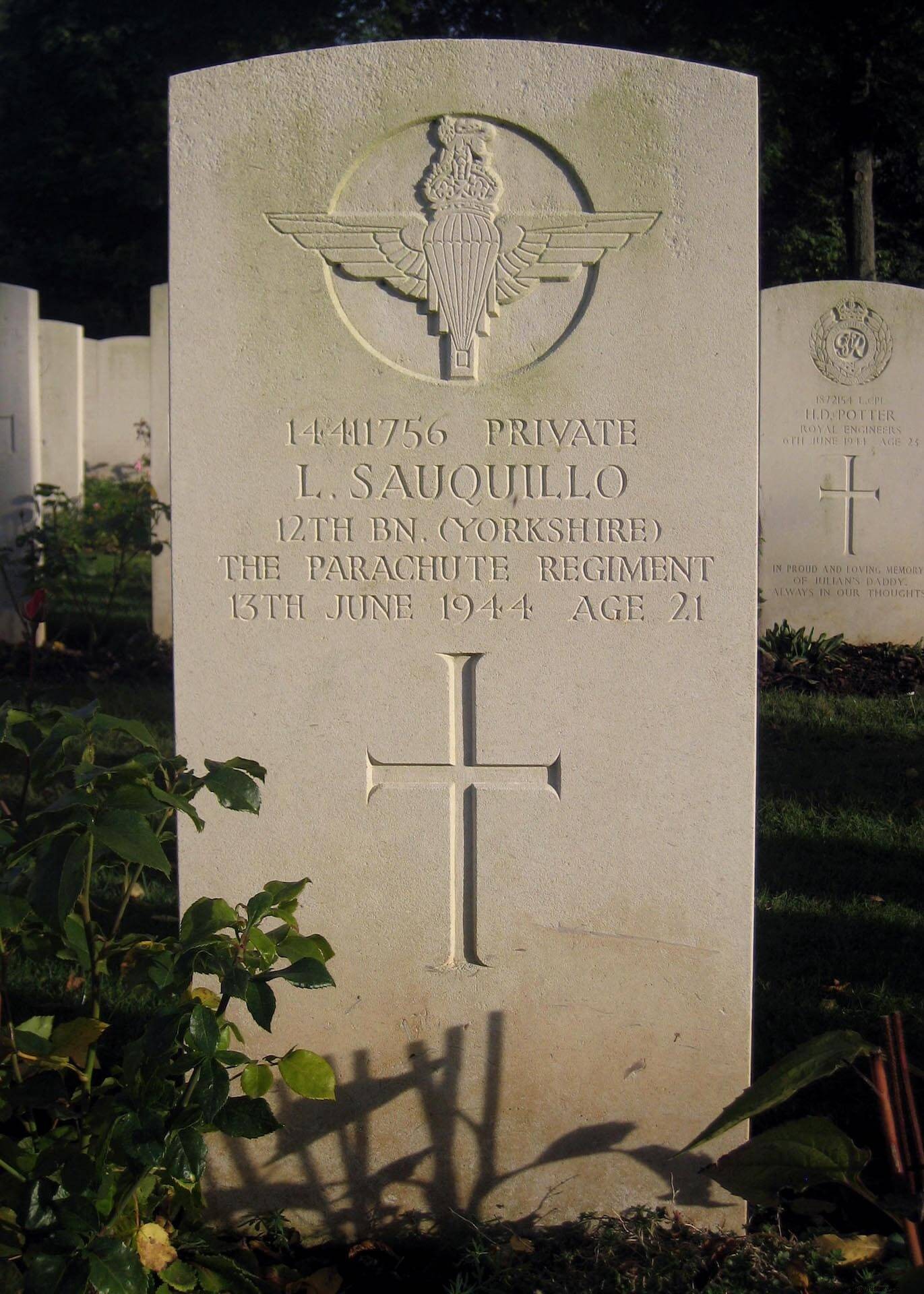
The journey of our young skydiver has come to an end at dusk on June 12. The 350 serviceable men of the battalion supported by a company of the 12th Devonshire and a few armor attacked the town of Breville paying a heavy price in casualties, even Lovat himself was wounded by the same artillery shell that hit the chief. of the unit, Lieutenant Colonel Johnson, who died instantly. That same night Lucio Sauquillo, mortally wounded, did not show up for the count and his death was recorded the next day, Tuesday, June 13. His few personal belongings included a pen, a cigarette case, a glass ring, a box of tape, writing paper, letters, a regimental patch, stamps and his identification tag. The 12th Yorkshire was so decimated by the first week of fighting on Norman lands that it had to be withdrawn from the front. Lucio's body rests next to that of many of his comrades in the British cemetery in Hermanville and was memorialized by the Sancho de Beurko Association on a trip to Norman lands on the occasion of the 75th Anniversary of D-Day. A team went there of EITB, the Basque public television, and the story of Lucio reached many homes through the midday news.
Historical recreation
The scenography was carried out in the middle of a dense Cantabrian forest vegetation that emulated the Norman bocage thanks to a separation line between farms and the re-enactors of the scene were given full freedom historical recreation group of the Sancho de Beurko Association to compose their characters under the premise of adjusting to the bibliography that we know about the British paratroopers on D-Day. The effort was worth it and thanks to the help of our friends we were able to gather the necessary materials, which were added to our own.
Unlike Operation Market Garden, on this occasion we have preferred that the rural environment preside over the entire scene , allowing only the irruption of two characters outside the British team:a non-commissioned officer and a high-ranking officer of the Kriegsmarine taken prisoner in the middle of the forest. The re-enactors showed British equipment complete and adapted in tone and color to the standard of the end of the war, highlighting the battledress uniforms of paratroopers, Denison coveralls made by Kay Canvas and straps "bleached" to the KG3 standard.
Thank Igor Jubindo and the brothers Joseba and Lander Zatón for their friendship and collaboration, as well as our re-enactors Eder Artal, Eneko Tabernilla, Iñaki Peña Eguskiza and Egoitz Ereño. Without the good work of all it would not have been possible to carry out such a challenge. Without knowing yet what the future holds for us in times as uncertain as the ones we are living through, we are convinced that it looks promising hand in hand with such good people.
Image gallery in homage to Lucio Sauquillo
Notes
(1) AHE, Basque Government Historical Archive, Presidency department fonds, box 252.
(2) Lucio Sauquillo´s Army Service Record, Army Personnel Centre, Support Division Historical Disclosures, Glasgow.

